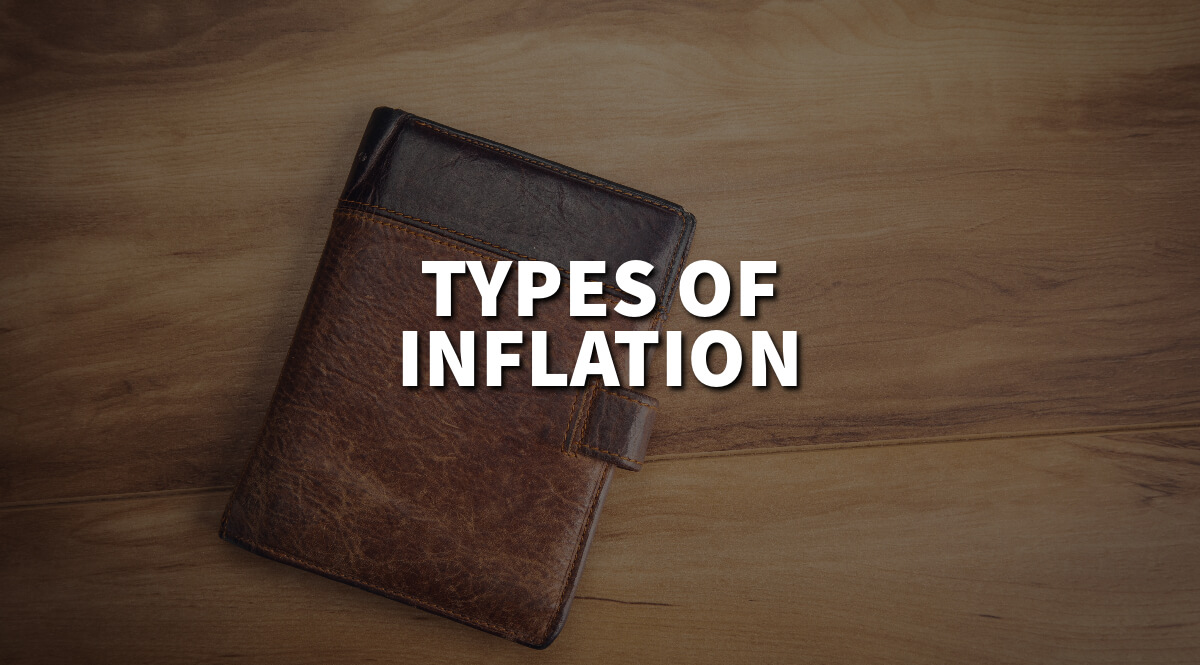
Types of Inflation: What They Mean for Your Wallet
Inflation is a complex economic phenomenon characterized by a general rise in the prices of goods and services in an economy over a period of time.
Without exaggeration, it is vital to have at least a general understanding of various types of inflation.
Inflation erodes the purchasing power of money and can have far-reaching effects on various aspects of an economy, including consumer behavior, investment decisions, and government policies.
Inflation is not a one-size-fits-all concept, and economists have identified several different types of inflation based on their underlying causes, effects, and magnitudes. In this comprehensive overview, we will explore the various types of inflation, their drivers, and their implications.
What are the different types of inflation?
We can start with demand-pull inflation.
It occurs when the overall demand for goods and services in an economy exceeds its supply. This can be caused by various factors, including increased consumer spending, business investments, government expenditure, or even exports.
When demand outpaces supply, businesses raise their prices to balance the two, resulting in a general increase in prices. Demand-pull inflation is often considered a sign of a growing and healthy economy. Still if it becomes too high or too rapid, it can lead to instability and economic imbalances.
Cost-push inflation arises from increases in the cost of production for businesses. This can be due to factors such as rising labor costs, higher raw material prices, or supply disruptions. When businesses face higher costs, they may pass them on to consumers in the form of higher prices for their products.
As a reminder, cost-push inflation can be particularly challenging because it can lead to a situation where both inflation and unemployment rise simultaneously, a phenomenon known as stagflation.
What about built-in Inflation?
Built-in inflation, also known as wage-price inflation, is a self-perpetuating cycle where workers demand higher wages to keep up with rising prices, and businesses, in turn, raise prices to cover the increased labor costs. This cycle can continue, driving further inflation. It often starts with a demand for higher wages due to past inflationary pressures and can be challenging to break without significant intervention or changes in economic conditions.
Hyperinflation

Hyperinflation is an extreme form of inflation characterized by an exceptionally rapid and uncontrollable increase in prices. It typically occurs when a country’s currency loses its value at an astronomical rate, leading to a complete breakdown of the monetary system.
The causes of hyperinflation can include excessive money printing, loss of confidence in the currency, political instability, and economic mismanagement. Zimbabwe’s hyperinflation in the late 2000s is a well-known example, where prices doubled every 24 hours.
What about other types of inflation?
Let’s continue!
Sectoral inflation refers to inflation that affects specific sectors or industries within an economy. This can be caused by unique factors affecting those sectors, such as changes in supply and demand dynamics, government regulations, or technological advancements. For example, the healthcare sector may experience higher inflation rates than other sectors due to the rising cost of medical technology and services.
Asset price inflation occurs when the prices of assets like real estate, stocks, or cryptocurrencies rise rapidly. This type of inflation is driven by factors such as speculation, low interest rates, and excessive demand for certain asset classes.
While it may not directly impact the prices of everyday goods and services, asset price inflation can have significant economic consequences, including wealth inequality and financial market instability.
Deflation
Deflation is the opposite of inflation, characterized by a general decrease in the prices of goods and services. While deflation may seem like a positive development for consumers, it can be detrimental to an economy because it can lead to reduced spending and investment, as individuals and businesses expect prices to fall further. This can result in economic stagnation or recession.
In summary, inflation is not a single, monolithic concept but encompasses various types, each with its own causes, effects, and implications. So, it is vital to pay attention to various types of inflation.
The type and magnitude of inflation in an economy can vary over time and may require different policy responses to manage effectively. Understanding the different types of inflation is essential for making informed economic decisions and shaping effective economic policies.
The post Types of Inflation: What They Mean for Your Wallet appeared first on FinanceBrokerage.
